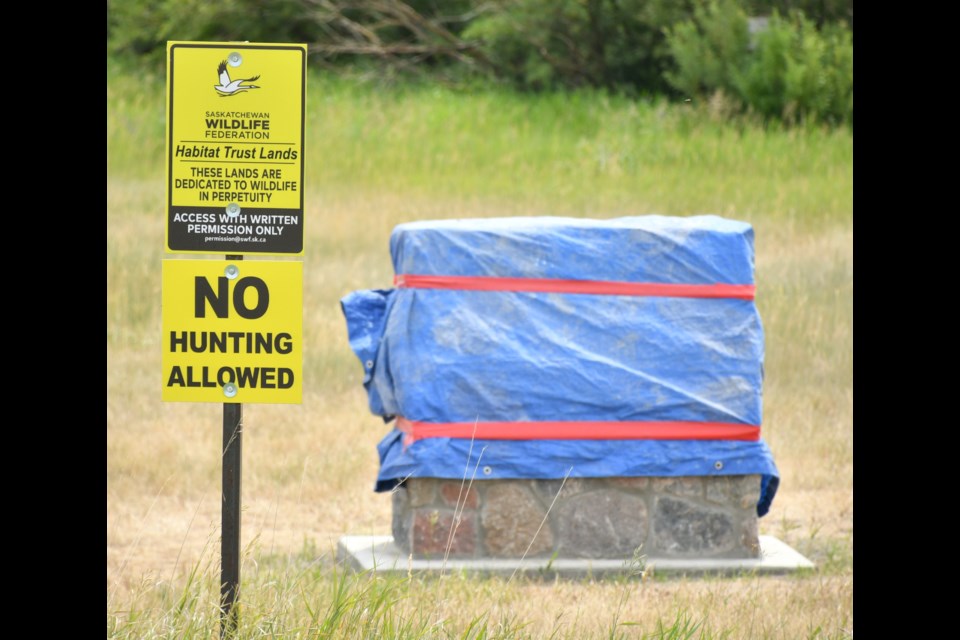MOOSE JAW — The Kaiser family’s donation of land to the Saskatchewan Wildlife Federation (SWF) will be remembered forever after the installation of a monument in the Rural Municipality of Baildon.
Ten Kaiser kin from Saskatchewan and British Columbia gathered recently at the corner of Township Road 154 and Range Road 2261 east of Highway 2 south — the entrance to the unincorporated community of Baildon — to see the unveiling of the cairn.
. The federation then installed signs saying the grasslands are “habitat trust lands” and are dedicated to wildlife in perpetuity — so hunting is prohibited but hiking is acceptable.
During the ceremony, as the small group watched, Kaiser and Darren Newberry, director of habitat lands for the Saskatchewan Wildlife Federation, removed a blue tarpaulin to reveal a rock-crafted cairn with a plaque.
That plaque reads, “Baildon Wildlife Sanctuary, NW 24-15-26 W2. These lands were donated by past, present and future Kaiser Kin. To be preserved in perpetuity as wildlife habitat.”
Afterward, Kaiser thanked the SWF for taking on the project and creating a wonderful-looking monument that honoured the family.
The history of the property is that Kaiser’s grandfather, Andrew, bought the land in 1912 and began working on it. However, the 1930s arrived and the property began experiencing wind erosion that made farming difficult.
Jerry’s father, Erlin, who grew up during the Great Depression and experienced those Dust Bowl years, began farming in the 1970s. However, he became frustrated with the wind blowing around the dirt, so he retired, planted grass, and moved to the West Coast.
Jerry did some organic farming for a while, but in 2007, he wanted to turn the grasslands into a forest and planted 100,000 trees. However, most died because the conditions were too dry. Yet, a few hearty species survived, including maple, oak, chokecherry and caragana.
Newberry thanked the Kaiser members for their “very generous donation.” He pointed out that it’s a “big deal” when someone donates land, and an even bigger commitment to give it to the SWF, since it’s expensive to buy such property today.
The director of habitat lands also commended Kaiser for “this generous gift,” which would exist long after everyone in attendance had died.
The SWF receives several parcels as donations annually, while it maintains roughly 32,000 hectares (80,000 acres) throughout the province, mainly in east-central Saskatchewan near Yorkton and Rocanville.
The wildlife organization has installed more than 100 similar cairns across the province to thank people who have donated land, said Newberry. While the organization likes to place the monuments in places where people can see them since “it’s good advertising,” it lets the donors pick the spot.
Some donors want the cairns installed in the bush where only hunters or hikers will find them, with one person asking the SWF to install a monument in a marsh, Newberry added. It was tough for federation staff to haul it in there, but they did it; no one has seen the cairn since.
Visit the for more information.




